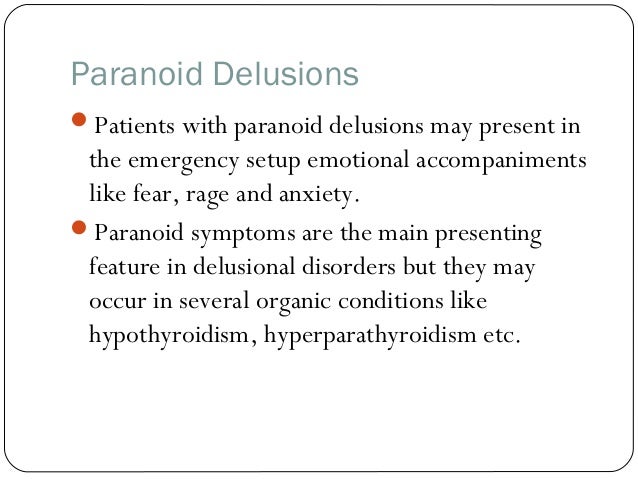

A certain amount of caution or suspiciousness may be environmentally adaptive and understandable within certain social contexts. Paranoid thinking can be thought of as existing on a spectrum from ‘normality’ to extreme maladaptive thinking.
#Paranoid meaning full#
Frequent complaints against others or services may be revealed during history-taking and may suggest the presence of paranoid personality traits, if not a full diagnosis. Paranoid personality disorder is often found with a co-morbid diagnosis of antisocial or borderline personality disorder in forensic populations. The prevalence of paranoid personality disorder in community samples has been reported at about 0.7–1.3% but increases to 10% in psychiatric outpatient samples ( Torgerson 2005 Coid et al 2006 Bernstein & Useda 2007) However, another large study of the general population of the USA showed a prevalence of 4.4% ( Grant et al 2004). Preference for unsubstantiated conspiratorial explanations of event, for the person and the world. Tenacious sense of personal rights, often out of keeping with the situation Suspiciousness and frequent distortion of experience so that ‘neutral’ events become hostile and persecutory.

The diagnosis is far more common in males than it is in females. There appears to be an increased incidence in families with schizophrenia and delusional disorder. The prevalence of paranoid personality disorder in the general population is approximately 0.5% to 2.5%. With schizoid and avoidant personality disorder, the amount and degree of paranoia is significantly less, which distinguishes it from paranoid personality disorder. However, reality testing is a continuum, and it may be difficult to distinguish the degree of reality testing of a person with mild schizophrenia from that of a person with a florid paranoid personality disorder, especially if in the latter cer-tain cultural factors or a potential gain from manipulating the examiner are present. With delusional disorder and schizophrenia, reality testing is lost in paranoid personality disorder, formal reality testing is said to remain intact. The most common differential diagnoses for paranoid personality disorder include delusional disorder (paranoid type), schizophrenia (paranoid type), schizoid personality disorder, and avoidant personality disorder. When their beliefs are challenged or they are stressed in any significant way, these individuals can show profound anger, hostility, and referential thinking. These individuals bear grudges and collect injustices. They pride themselves on being rational and objective, but they appear to others as unemotional, affectively restricted, and hypervigilant. They unjustifiably question the loyalty of friends and significant others, and consequently, are often socially isolated and avoid intimacy. In new situations, they search for confirmation of these expectations and view even the smallest slight as significant. Afflicted individuals are reluctant to confide in others they assume that most people will harm or exploit them in some manner. The core feature of paranoid personality disorder is a pervasive distrust and suspiciousness of others.

Rivas-Vazquez PsyD, in Massachusetts General Hospital Comprehensive Clinical Psychiatry, 2008 Paranoid Personality Disorder


 0 kommentar(er)
0 kommentar(er)
